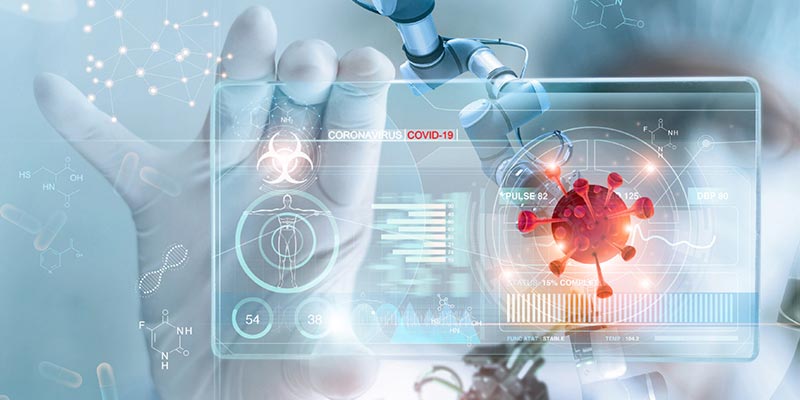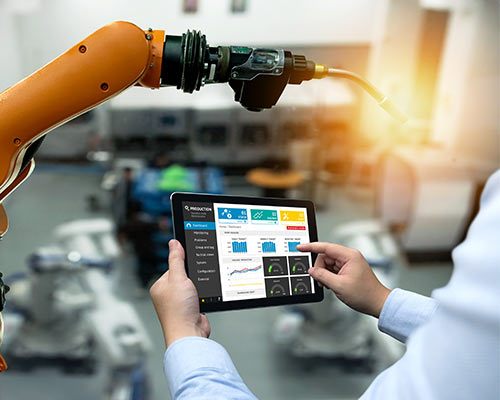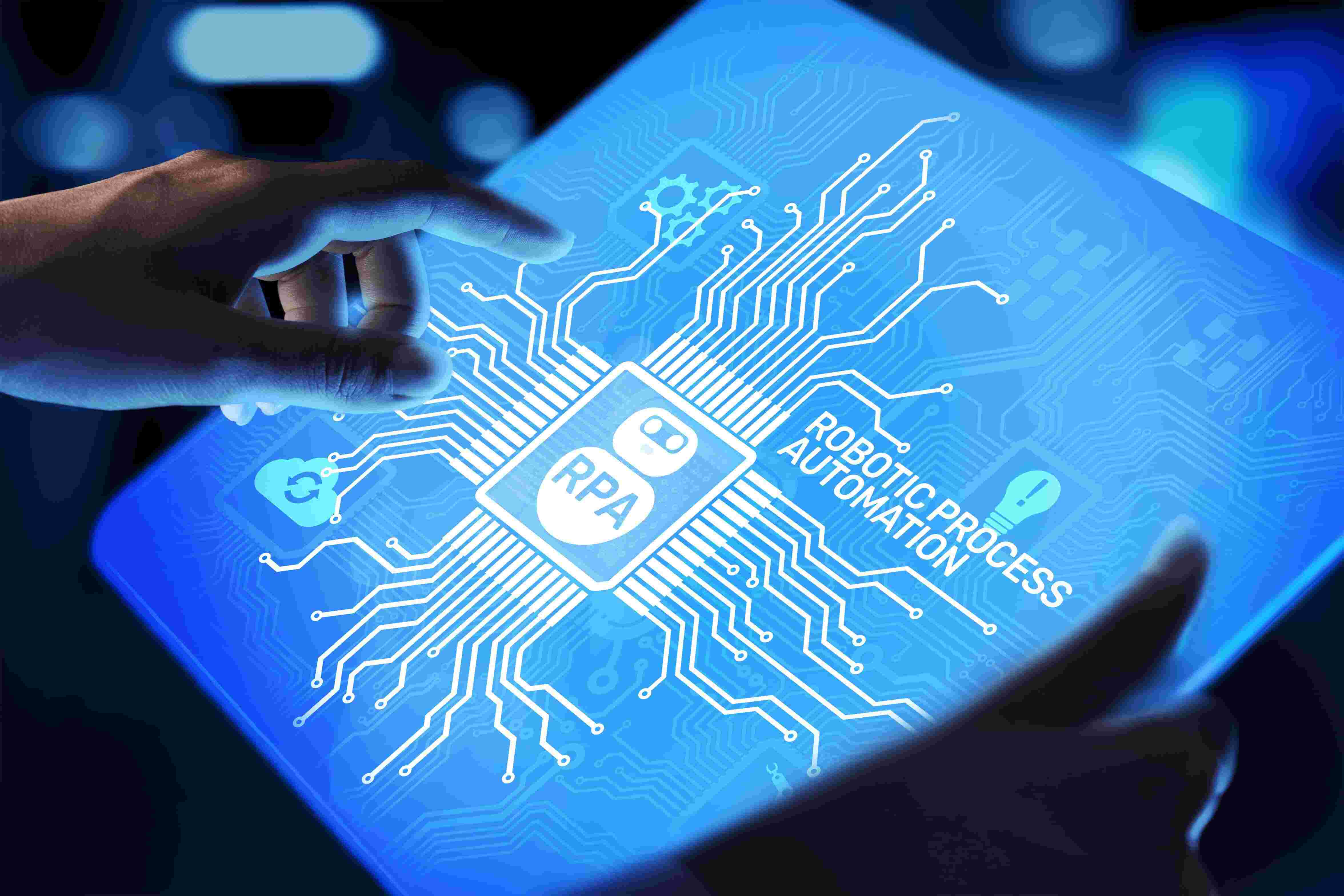“Hyperautomation is all about the transformative power of scalable automation solutions. Discover the potential of achieving unparalleled speed, efficiency, and accuracy in future business landscapes.”
Over an extensive period, enterprises have meticulously gathered data, delving into the minutiae of their daily operations—from overseeing manufacturing processes and healthcare interactions to managing shipping logistics and financial transactions. The continuous accumulation of this invaluable operational intelligence has spurred the demand for business process software, aimed at unraveling complexities, standardizing procedures, and automating tasks wherever feasible. A groundbreaking opportunity has now emerged: leveraging this repository of operational data and business process expertise to train artificial intelligence. The goal is to deploy AI-driven applications capable of not only comprehending but also proactively responding to the nuanced rhythms of business dynamics. The successful execution of this strategy promises a potent and transformative business disruption, aptly labeled "Hyperautomation" by Gartner. This forward-thinking approach signals a paradigm shift where AI becomes a strategic ally, adept at navigating the intricacies of operational landscapes with unprecedented sophistication.
The Power of Hyperautomation
Imagine where your business operations can seamlessly adapt to changing dynamics, where tasks are executed with unmatched precision, and where your workforce is liberated from mundane, repetitive tasks. This is the power of hyperautomation—a revolutionary business technique that takes automation to new heights by incorporating artificial intelligence (AI) and machine learning (ML). It's not just about automating routine tasks; it's about orchestrating complex workflows, streamlining business processes, and, ultimately, maximizing productivity.
Hyperautomation is about leveraging the repository of operational data businesses accumulate daily. It's not content with the confines of traditional automation; instead, it merges robotic process automation (RPA) with avant-garde technologies like AI and ML. The objective? To engineer scalable automation solutions that don't just mimic but elevate human interactions. Hyperautomation isn't a standalone tool; it's a comprehensive strategy, weaving a strategic tapestry of technologies, tools, and platforms. It heralds a new era in which business processes aren't just streamlined; they're finely tuned symphonies of efficiency, innovation, and sustained competitive advantage.
How Hyperautomation Works?
Hyperautomation represents a sophisticated convergence of pivotal technologies tailored for businesses seeking a transformative edge. This orchestration encompasses critical components such as artificial intelligence (AI), machine learning (ML), event-driven software architecture, robotic process automation (RPA), business process management (BPM), intelligent business process management suites (iBPMS), integration platform as a service (iPaaS), low-code/no-code tools, packaged software, and more. The strategic objective is to seamlessly integrate these elements, furnishing businesses with a comprehensive solution meticulously designed to elevate operational excellence.
This isn't merely about task automation; it's a nuanced pursuit of understanding and replicating human interactions through AI, perpetually honing processes for peak efficiency. The resultant data from these operations emerges as a coveted asset, providing businesses with invaluable insights into concealed opportunities for ongoing refinement and optimization. Hyperautomation, therefore, emerges as a catalyst for businesses aiming not just to automate operations but to strategically evolve, consistently drive efficiency, and uncover untapped avenues for sustained growth and competitive advantage in the dynamic business landscape.
Hyperautomation vs. RPA
Hyperautomation is basically expanding Robotic Process Automation with AI. Engaging in manual, repetitive processes can be time-consuming, challenging, and prone to errors, especially in environments with complex systems, unclear applications, or insufficient documentation. Research indicates that a substantial portion of workers' time is consumed by manual tasks, diverting attention from high-value projects. Prioritizing automation has become crucial for success in such scenarios.
Enter hyperautomation, a pivotal player in alleviating these challenges. At its core, hyperautomation leverages two key technologies: Robotic Process Automation (RPA) and Artificial Intelligence (AI). RPA automates routine processes, and when integrated with AI, it adds a problem-solving dimension through data analysis.
For example, RPA can extract information from an email, handing it over to AI for comprehensive analysis. The decisions made by the AI then guide RPA in executing specific actions based on the processed data. This seamless collaboration between RPA and AI enhances efficiency and problem-solving capabilities, streamlining workflows and optimizing overall operational performance.
Hyperautomation Best Practices
Hyperautomation technology is both expansive and methodically structured. It extracts crucial information from businesses, encompassing designs and decisions, feeding this data into machine learning models for validation and organization.
To seamlessly integrate hyperautomation, companies can follow these best practices:
- Define Clear Business Goals: Businesses should pinpoint specific goals they aim to achieve through hyperautomation, ensuring clarity in expected outcomes.
- Enhance Scalability: Streamlining business processes involves improving procedures to facilitate growth. Automation strategies should be scalable, capable of handling large-scale processing efficiently.
- Optimize Tool Selection: Research and select the most effective combination of tools aligned with business objectives. Hyperautomation is not about job replacement but liberating high-value workers from routine tasks, allowing them to focus on projects requiring specialized knowledge.
- Strategically Assign Automation Tools: Identify and assign automation tools to different activities, including discovery, analysis, design, and automation. The possibilities for automation are diverse and can be tailored to specific business needs.
- Automate Entire Processes: Consider automating entire processes from start to finish. For instance, in the HR department, this could involve digitizing the entire process from candidate selection to employee management. This approach fosters standardized practices, enhances efficiencies, and eliminates bottlenecks, contributing to scalable automation solutions and maximizing overall productivity.
Hyperautomation Use Cases in Various Industries
➤ Retail: Facily's Trailblazing EfficiencyAfter experiencing triple-digit growth, Brazil's Facily faced a challenge in customer service. They embraced hyperautomation, integrating financial management, inventory, and logistics. The result? Faster order fulfillment, better inventory control, and improved purchasing.
➤ Finance Operations: Lyft's Swift Financial CloseLyft utilized hyperautomation to cut the time it takes to close its books on revenue by more than half. The company anticipates further time reductions as it continues to enhance its processes, showcasing the potential for efficiency gains in financial operations.
➤ Supply Chain: Chipotle's Fresh ApproachChipotle, known for its insistence on fresh ingredients, utilized hyperautomation to maintain a responsive supply chain. Automations tracked and forecasted needs accurately, allowing suppliers to trust forecasts and plan accordingly. This not only streamlined operations but also saved millions in reconciliation activities.
➤ Healthcare: Coloplast's Personalized ServiceDanish healthcare provider Coloplast leveraged hyperautomation in marketing to communicate with ostomy and catheter users. The result was engagement levels well above industry averages, showcasing how automation can enhance personalized service in healthcare.
➤ Customer Service: Razer's Tech-Savvy SupportRazer, a company serving tech-savvy gamers, optimized its service process with chatbots and AI. Automating 50% of customer inquiries through chat, Razer intelligently routed the rest to other communication channels, showcasing how hyperautomation can enhance customer interactions.
➤ Data Security: AxiomSL's Proactive ApproachAxiomSL's AxiomSL business unit used machine learning automations to enhance data and risk analytics in the financial services industry. This proactive approach included automated scaling, tuning, and encryption of sensitive data, demonstrating the role of hyperautomation in securing critical information.
Conclusion: What’s Next in Hyperautomation
Hyperautomation has been a lifeline for numerous businesses during and post-pandemic times. However, upon the return to regular operations, there emerged a need for clarification regarding the increasing presence of robots in the workplace. Organizations are proactively reevaluating roles and preparing their teams for significant transformations. Instead of perceiving hyperautomation software suites as a threat, as an advice for organizations to train "converged teams," combining technological proficiency with the business domain expertise of human employees. Hyperautomation, far from diminishing the demand for human work, aims to eliminate restrictive processes, reduce errors, and liberate time for employees to engage in more meaningful tasks.
Current imperatives driving business leaders to embrace hyperautomation include the necessity to align with market demand, address delays caused by legacy worker processes, overcome limitations imposed by insufficient IT resources or knowledge, meet regulatory compliance, and ensure stable production processes and higher product quality with minimal human error. This strategic adoption is fueled by a collective commitment to scalable automation solutions, streamlined business processes, and the overarching goal of maximizing productivity.
References:
https://www.oracle.com/cloud/hyperautomation/





